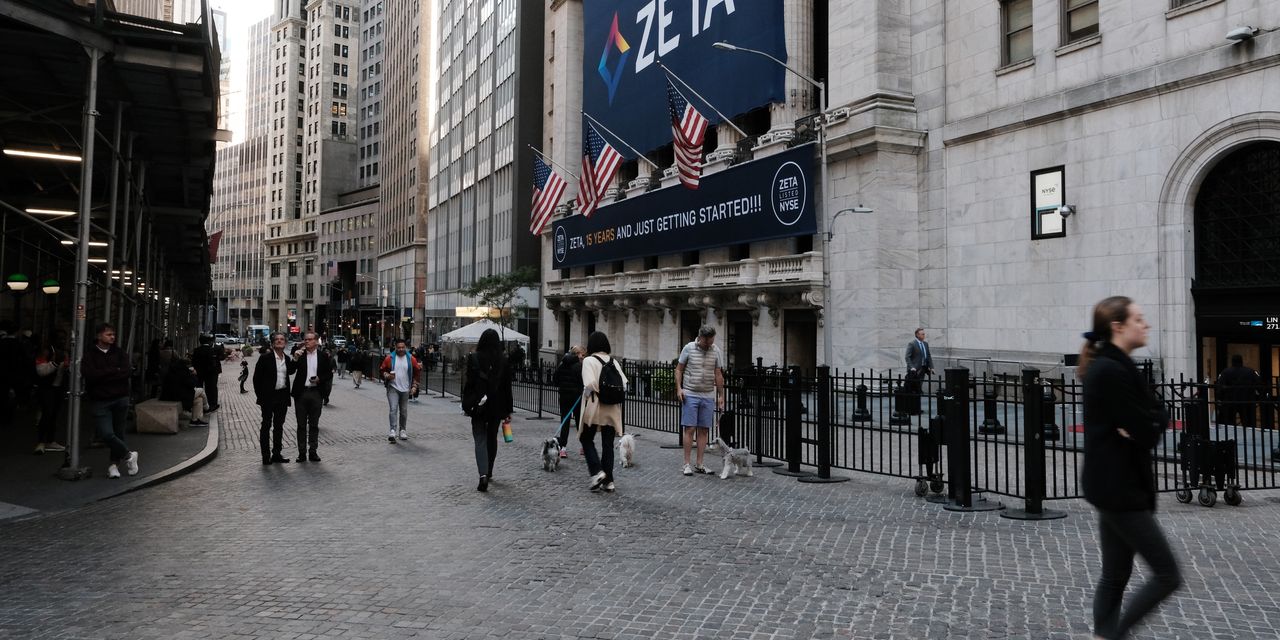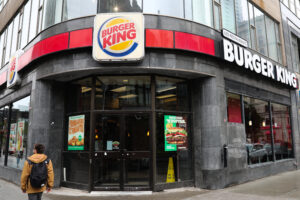
Market Extra: Bond-market recession indicator is saying ‘trouble ahead’ for U.S. economy
Spencer Platt/Getty ImagesOne of the bond market’s most reliable gauges of impending U.S. recessions was back in solidly triple-digit negative territory on Friday, as investors absorbed disappointing U.S. manufacturing-sector data and a spate of European central bank interest rate hikes on Thursday. The spread on 2- BX:TMUBMUSD02Y and 10-year yields BX:TMUBMUSD10Y stayed at more than minus 100 basis points throughout Friday, starting in European trading, after having intermittently drifted in and out of that level on Thursday. It’s at one of its widest levels since early March, a period dominated by fears about Silicon Valley Bank. Investors were in a risk-off mood on Friday, with Treasurys rallying and all three major U.S. stock indexes DJIASPXCOMP lower in the New York afternoon.The deeply inverted spread basically reflects a 10-year yield that’s trading at 3.74%, or a full percentage point below its 2-year counterpart, which was around 4.78% on Friday. The longer-term rate ordinarily trades higher than the short-term rate when there’s optimism about the outlook, and lower amid greater pessimism. Sentiment has swung dramatically since last week, when investors initially brushed aside the Federal Reserve’s guidance that two more interest rate hikes would likely be appropriate this year. That helped the S&P 500 and Nasdaq Composite log their longest streak of weekly gains in years only a week ago. Then, on Thursday, central banks in England, Norway, Switzerland and Turkey stepped in with more rate hikes in a reminder that inflation remains a scourge for policy makers around the world, and that global economic growth could be deteriorating.Read:Global growth outlook deteriorates on central bank rate hikes, raising risks for U.S. and markets“A deeply inverted yield curve means recession risks are on the rise, plain and simple,” said Michael Reynolds, vice president of investment strategy at Glenmede, which oversees around $41 billion in assets from Philadelphia. “The Treasury market is telling us there’s trouble ahead of us on the economic front. It may not be immediate, but it’s there. The yield curve isn’t a perfect indicator. It has a lag time of six to 12 months or beyond, and the economy can take a while to make big turns. You have to buckle in for the longer term: The economic picture is not looking good.”“We’ve seen over the last year that markets have been a bit skeptical that the Fed would follow through with what it says it will do,” Reynolds said via phone. “The market needs to realize the Fed has to do what it has to do to get inflation under control.” In addition, “we live in an increasingly global world and if major central banks are going to tighten more, that’s going to have an impact on the U.S. If the global economy falls, the U.S. should as well.” The 2s/10s spread has remained negative since last July and the U.S. economy’s ability to dodge a recession has had many doubting the bond market’s predictive powers. This week, Treasury Secretary Janet Yellen told Bloomberg News that, in her view, the odds of a downturn have gone down given the resilience of the labor market at a time when U.S. inflation is easing. See also:Why these top traders are betting on good inflation news in the months aheadHowever, there are more than 40 different Treasury spreads that are negative, and about half of them were more than 100 basis points below zero as of Thursday.In an email on Friday, Stephen Kolano, the Massachusetts-based managing director of investments for Integrated Partners, wrote that “the action and commentary of the week frame a picture for markets that the inflationary fight underway between central banks and supply/demand imbalances in the global economy may be more drawn out than originally hoped for coming into 2023.”
Market Pulse Stories are Rapid-fire, short news bursts on stocks and markets as they move. Visit MarketWatch.com for more information on this news.


